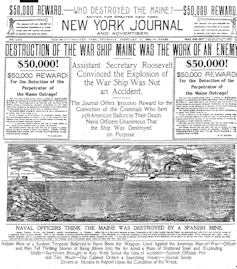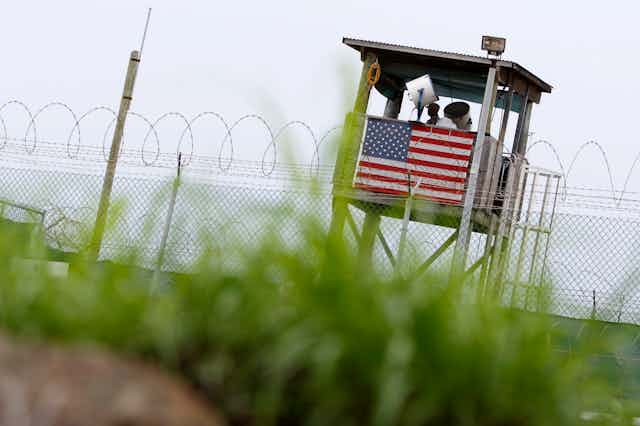President Barack Obama’s visit to Cuba has been heralded as a “new beginning” for Washington and Havana. The American embassy in the Cuban capital has been reopened, and travel restrictions for US citizens are being relaxed. But despite their so-called “thaw”, the US’s relationship with Cuba is still deeply tangled. It has been since the 19th century – and central to the two countries’ ugly history is Guantánamo Bay.
La Bahía de Guantánamo is a saltwater lagoon 40 miles to the east of Santiago de Cuba. Before 1492, Puerto Grande, as Columbus named the bay, was productive hunting and fishing ground for the indigenous Taínos and their predecessors. Since there are no defensive bluffs at the harbour entrance, the Europeans did little to develop the lagoon beyond building villages and the nearby town of Guantánamo.
Things began to change as Cubans fought for independence from Spain in the wars of 1868-1878 and 1895-1898. The US was never going to stay on the sidelines; while a proposal to annex Cuba was rejected in Congress, US senators followed events in Cuba very closely and provided material support to the rebels.

In February 1898, the USS Maine, deployed to quell a pro-Spanish conspiracy, exploded in Havana harbour, killing nearly 300 men. Blaming Spain for the explosion, the US entered the war to assist the Cubans in their struggle for independence. Guantánamo Bay was captured in June 1898, a naval base was established, and the US fleet found hurricane shelter in the bay before invading Santiago that July.
The Spanish were defeated by the combined US and Cuban forces, and the new republic’s constitution was drawn up to hand over control from the US military governorship. This control was only partial: an amendment drawn up by Senator Orville Platt was inserted into the constitution, stipulating not only tight trade and economic regulations and the US’s right to intervene in Cuban affairs, but also the leasing of four coaling and naval stations – including Guantánamo Bay.
The Platt Amendment details complete jurisdiction of the US in those locations while recognising Cuba’s “ultimate sovereignty”, and stipulates the right to use the areas only as naval stations and for no other purpose. The lease is also predicated upon the continuing agreement of both parties.
These three stipulations have caused trouble ever since. Many Cubans, especially marginalised non-whites, were bitter that Spain had simply been replaced by a new imperial force, albeit managed through the “sovereign” Cuban republic. This led to an uprising across the island in 1912, put down brutally by police, military and local militias who feared a black revolution – “another Haiti”.
The US stationed more than 1500 marines in Guantánamo and Santiago to help quell the uprising and to protect US interests. The military presence remained in Guantánamo long afterwards, outlasting various Cuban leaderships.
In 1933 Franklin D. Roosevelt cancelled both the 1903 Treaty of Relations and the Platt Amendment under the so-called “Good Neighbour Policy”, and a new agreement was signed in 1934 outlining the continuation of the original Guantánamo Bay lease. Expanded during World War II, the site became a strategic refuelling and distribution depot for military and merchant shipping during the war, and a training site for anti-submarine activities.
Crocodiles and cactus
Things changed radically with the revolution of the 1950s. The US’s lease cheques are still made out to the “Treasurer General of the Republic”, a position that ceased to exist in 1959. They have supposedly been piling up uncashed in a desk drawer; Fidel Castro has said he once cashed one for $4,085 by mistake in the confusion of his government’s early days.
After Castro took control, the White House made clear that no changes in diplomatic relations would affect the Guantánamo treaty. Free access for workers ended in 1958, and heightened security was installed on both sides of the perimeter. Castro increased the natural defence of crocodiles and cactus to create the “Cactus Curtain”, while US troops laid 75,000 land mines between the US and Cuban border. The Missile Crisis of October 1962 saw an influx of US marines to the base. Castro turned off its water supply, prompting the base’s commanders to import water from Jamaica until a desalination plant could be constructed.
In the early 1960s, the base was key for various covert operations to topple Castro’s regime: Northwoods, Mongoose, Bingo, Dirty Trick, and more besides. One of the Northwoods proposals was to blow up a US ship in Guantánamo Bay and blame it on Cuba, reminiscent of what happened to the USS Maine in 1898.
The base remained a focus of Cold War tension until the collapse of the Soviet Union in 1991. In that same year, Camp Bulkeley, named after the “Gitmo” base commander of 1964, was hastily enlarged with hundreds of tents to house Haitians fleeing their country after a coup-d’état overthrew democratically-elected president Jean Bertrand Aristide.
Those Haitians picked up in international waters by the US Coast Guard were brought to Guantánamo and held for processing by the Immigration and Naturalization Service. Many were declared economic, not political, migrants, and were returned to Haiti. Others were screened for HIV, and those tested positive were denied entry into the US.
The US government was ultimately sued over the HIV camp, and the case became a cause célèbre, with law students going on hunger strike and actors Susan Sarandon and Tim Robbins raising the issue at the 1993 Academy Awards. The camp was declared unconstitutional and closed.
This episode became something of a blueprint for events at Guantánamo post-2001.
Beyond the rule of law
Much ink has been spilled on what’s happened at Guantánamo since the inception of the War on Terror. The bay’s detention facilities, comprising specific units such as Camp Delta, Camp Iguana, Camp 7 and the now defunct Camp X-Ray, with orange-suited detainees kneeling behind wire fences, are today part of the popular imagination. Amnesty International called the facility “the Gulag of our time”.
Most importantly, various of the US’s practices at Guantánamo violated articles of the Geneva Conventions and the United Nations Convention against Torture, to both of which it is signatory. Many of these violations have been justified on the basis of Guantánamo’s extraterritorial status, which has allowed the US to carefully develop it as an anomalous site beyond the rule of law.
President Obama signed an executive order closing the facility at Guantánamo on his first day in office in 2009, but to no avail; the camp remains open. He is still keen to close Guantánamo before his presidency ends. Many in Congress oppose him. Presidential contenders have been asked their views. Hillary Clinton and Bernie Sanders support Obama, agreeing that the site is a recruiting tool for fighters against the US around the world.
On the other side, Cuban-American Ted Cruz advocates not just keeping the camp open, but growing it. Donald Trump also wants it bigger. This mirrors Obama’s first presidential campaign: he promised to close it, whereas the Republicans to his right wanted it expanded.
Raúl Castro has repeatedly called for a return of the whole of the US possession to Cuba, citing Cuba’s “ultimate sovereignty”, and the question will loom during Obama’s visit. But the US is deeply embedded in Guantánamo, and will not surrender it willingly. Whoever wins the presidency in November is doomed to inherit an ancient problem. Good luck to them.

